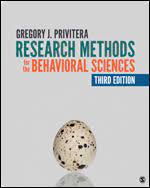-
Best Australian Pokies Best Payout
Play Free 777 Pokies Online
What Are the Best Australian Pokies to Win Big On
What Are the Best Online Pokies with Low Minimum Deposits for Real Money in Australia
New Australian Pokies Accepting PayID
What Are the Best Strategies to Win in Online Pokies with Bonus Rounds in Australia
Tips for Winning Top Australian Pokies
What Online Casinos Offer Free Play Pokies with Welcome Bonuses in Australia
Australian Slot Games
Payout Ratio Pokies with Welcome Bonus

Research Method for the Social and Behavioural Sciences.
Social and Behavioural Sciences
DESCRIPTION
Recognized leaders in the field—authors Bart Weathington, Christopher Cunningham, and David Pittenger—present:
- Introductions to multiple research designs—including single-participant, multi-group, longitudinal, correlational, and experimental designs—accompanied by examples
- Bibliographic research and methods for appropriate sampling
- Identifying, developing, and evaluating reliable and valid approaches to measurement
- The issues and steps common to all single-factor and multifactor studies, as well as single-subject and nonexperimental methods
- How to summarize research in writing that conforms to the editorial guidelines of the American Psychological Association
A comprehensive review of research methods and the statistical concepts that support them, Research Methods for the Behavioral and Social Sciences offers the best techniques for studying behavior and social phenomena.
Written by an interdisciplinary team of global experts covering diverse research methods – including research design, research tools, and statistical techniques – this volume focuses on advanced research methods for anyone working in the social and behavioral sciences. The information needed to perform research in the laboratory, the field, or online is mapped out to provide specific applications and tools in applying each method.
The issues surrounding reliability, validity, and obtaining consent are explained alongside detailed descriptions of the impact of pre-knowledge on participant behavior, the ways that researchers unintentionally influence participants, and tips on administering suspicion probes and debriefings.
The book then lays out bio-physiological measures, eye-tracking methods and technologies, the construction of questionnaires, and reaction-time methodologies without assuming too much prior knowledge.
The basics of Bayesian analysis, item response analysis, social network analysis, and meta-analysis are also summarised as the editors combine innovative methods and statistics to showcase how to perform quality research.
ABOUT THE AUTHOR
David J. Pittenger, PhD, is Dean of the¿College of¿Liberal Arts¿at Marshall University. His primary research interests and publications focus on the partial reinforcement extinction effect, psychometric properties of personality inventories, the coping strategies of caregivers, and ethical issues related to the behavioral sciences.
Key features
- A research methods volume written for advanced undergraduate students, graduate students, and those who already have a Ph.D. across the social and behavioral sciences.
- Contains contributors that span the social and behavioral sciences to allow for a better understanding of performing research within and across multiple disciplines
- Supplies specific applications and tools to use in applying each method
The social and behavioral sciences draws from an interdisciplinary combination of subjects such as sociology, psychology, and anthropology to provide a well-rounded understanding of the human experience.
While the field of behavioral science is very broad, there are a number of characteristics specific to the field.
A behavioral scientist is a person whose training allows the study of behaviors of groups and individuals. This shows scientist how that impacts personal development, relationship with others, as well as helping to predict possible future behaviors and its impact on society as a whole.
Behavioral scientists are often found working in government agencies, although there is a growing demand in the private sector. As the field of behavioral science is so vast there are a wide variety of possible job titles and duties.
The professionals who work in this field draw on skills to interact with people in ways that are sensitive to psycho-social and cultural nuances. Some of the most prominent careers in the social and behavioral sciences are in the fields of:
- Public health
- Mental health
- Public safety
- Social services
- Public policy
Some of the roles played by behavioral scientists in organizations are expected to hold are:
- Perform research to understand potential health impacts for certain niche population groups and to develop programs and/or therapies to help overcome these health challenges.
- Model predictive behaviors, such as the potential to commit violent acts in certain population groups. Once the behavior is understood, you will work to develop therapies and methods that can curtail, or even eliminate criminal behaviors.
- Creating data sets for observed population groups to better understand and predict behaviors and/or health challenges in communities so policy makers can develop transformative policies for the community.
- Development and implementation of therapeutic approaches to help people change their behaviors in a way that is lasting and positive.
Behavioral scientists work in everything from the healthcare system as a physiologist, as well as working in law enforcement in an advisory capacity as a criminologist.
Some people feel called to work in education advancing research in the world of behavioral science research. Still others will work in social work or counseling professions.
Education opens up career opportunities
As a general rule you can advance to more specialized careers in the social and behavioral sciences with more education and work experience. Some professions with state licensing requirements like social work and clinical psychology require a minimum level of education to be eligible for licensure.
Attachments
